April 17, 2025 | 05:15 GMT +7
April 17, 2025 | 05:15 GMT +7
Hotline: 0913.378.918
April 17, 2025 | 05:15 GMT +7
Hotline: 0913.378.918
Nearly 5 years ago, in the coastal sand dunes of Ly Trach commune, Bo Trach district (Quang Binh), there were many units licensed to exploit sand mines. After exploiting all the sand, a red layer of basalt soil has been revealed that can be improved and planted with fruit trees.
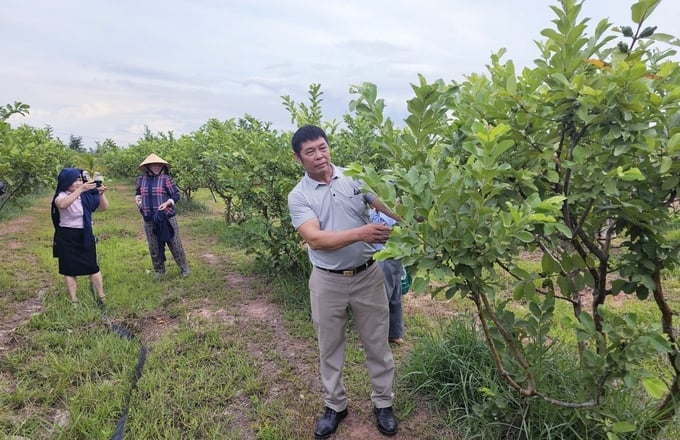
Guava garden produced organically by Nguyen Van Han's family. Photo: Tam Phung.
Realizing this, Mr. Nguyen Van Han (Ly Trach commune) boldly rented nearly 3 hectares of hilly area that had been exploited for sand. He also borrowed money from the Social Policy Bank of Bo Trach district to grow guava on an area that had been leveled quite flat. Researching on the news, Mr. Han learned how to garden, grow guava and orient to organic farming. “We must bring clean products to everyone so that production and consumption can last long. Although there are many difficulties at first, organic production brings many benefits in the long run" - Mr. Han confided.
The guava variety that he chose to grow is the Taiwanese guava. “This variety is drought resistant, has few pests and diseases and produces high yield and quality fruit” he said.
To have fertilizer source for guava garden, Mr. Han buys all kinds of manure and composts it with microbial organic phosphate fertilizer. After two weeks of composting, the compost can be fertilized to plants.
Besides, he also buys all kinds of fish scraps from ships and fishing boats from the sea, freshwater lake trash fish incubated with probiotics in a certain ratio. After 12 months, he adds organic nutrient solutions to the drip irrigation system for plants. Thanks to that, the guava tree is always healthy, branches and bears many fruits, in which the fruits are large, even, good quality and sweet.
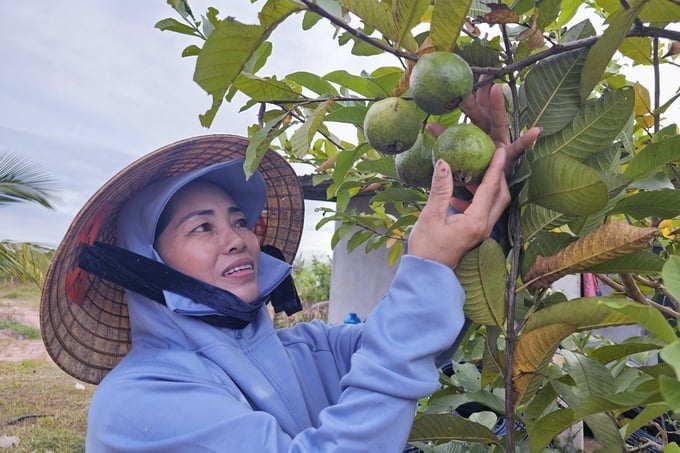
Even though it is on degraded sandy land, thanks to focusing on organic production, the guava garden still develops well and is highly effective. Photo: Tam Phung.
To limit pests and diseases of guava, Mr. Han buys biological products (soaked from garlic, chili...) for preventive spraying. "My farm does not use pesticides, only biological products" - Mr. Han said.
To have high quality products, after cutting branches for the guava tree to bud, flower, and bear fruit, Mr. Han cuts off each branch, leaving only 1-2 fruits. He said this helps the fruit grow big and have good quality. If the tree has many fruits, the fruits will be small, not beautiful and not delicious.
After being pruned and selected, the young guava fruit will be wrapped in a bag to prevent harmful organisms and ensure a beautiful design. The main guava harvest usually starts in August every year. At this time, traders will call to order every day so that Mr. Han's family can actively harvest.
According to Mr. Han, the farm currently has a total area of nearly 3 hectares, each hectare planted with about 800 guava roots. On average, guavas weigh 3 fruits/kg, and the selling price is about 0,8 USD/kg. Each guava tree earns about 119 USD per year. "Actually, each hectare earns about 9880 USD, excluding expenses, the family has a profit of more than 19,840 USD per year" - Mr. Han said.

Mr. Nguyen Van Han checks the guava garden after pruning the young fruit. Photo: Tam Phung.
When harvesting fruit, Mr. Han will choose some branches to prune the tops to sprout new shoots, flowers, and bear fruits. With this method, Mr. Han's guava farm always has fruit to serve customers all year round.
To create a product brand, Mr. Han established Phuc Loc General Commercial Services Agricultural Cooperative (Phuc Loc Cooperative) with 7 participating members, Mr. Han was elected as Executive Director. Currently, Phuc Loc Cooperative has over 10 hectares of organic guava growing.
Next rainy season, Phuc Loc Cooperative will plant about 1,000 new red-fleshed guava roots to diversify products, while gradually bringing a number of quality guava varieties with high economic value into production. The cooperative is also organizing production in the direction of expanding the area, linking production to product consumption on the basis of applying technical advances, organic farming, and VietGAP.
Translated by Phuong Linh
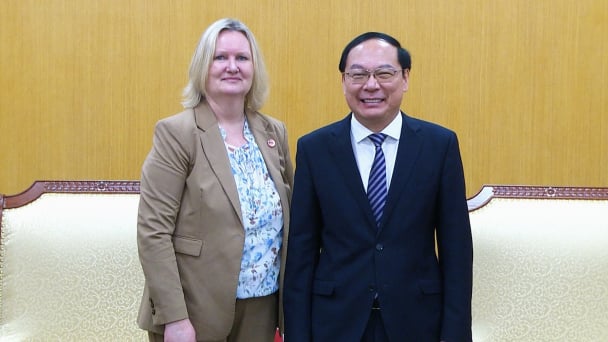
(VAN) On April 16, Vietnam Deputy Minister of Agriculture and Environment Le Cong Thanh welcomed and worked with State Secretary for Trade & Global Sustainability at the Danish Ministry of Foreign Affairs Lina Gandlose Hansen.

(VAN) Japan and Vietnam will strengthen their capacities in early disaster warning, resource circulation, and the effective, sustainable management of electronic waste.

(VAN) This was affirmed by the Director-General of the Global Green Growth Institute (GGGI) during a working session with Deputy Minister of Agriculture and Environment Le Cong Thanh.

(VAN) On April 16, Minister of Agriculture and Environment of Vietnam Do Duc Duy received Minister of National Planning and Development of Indonesia Rachmat Pambudy.

(VAN) China’s Ministry of Ecology and Environment shares its journey of transitioning energy and monitoring air pollution to keep Beijing’s skies blue.
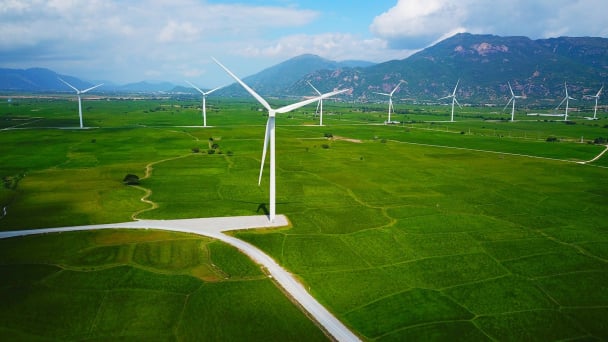
(VAN) The strategic directions of the Party and State are creating a favorable foundation to promote a wave of creative entrepreneurship in the fields of green technology.
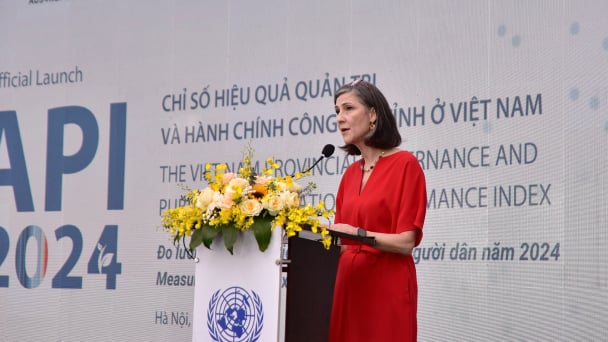
(VAN) The 2024 PAPI Index suggests an evidence-based roadmap aimed at enhancing public governance effectiveness with a citizen-centered approach.